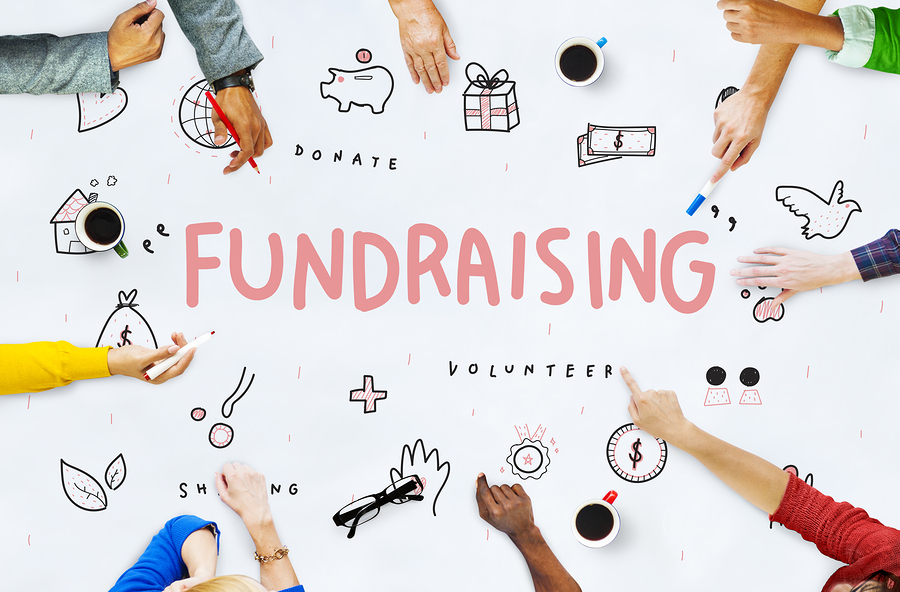The Duty of Area Involvement in Nonprofit Fundraising: Structure Lasting Relationships for Lasting Support
Community involvement is progressively identified as a critical part of successful not-for-profit fundraising. By fostering authentic relationships with neighborhood stakeholders, organizations can cultivate count on and loyalty, which are vital for sustainable support. However, the strategies and methods used to engage areas differ extensively, increasing vital questions regarding effectiveness and influence. What are the finest techniques for cultivating these vital links, and how can nonprofits gauge their success in this sector? Understanding these dynamics can considerably influence the future of fundraising initiatives and the overall goal of nonprofit organizations.
Recognizing Area Engagement
Neighborhood interaction is a crucial part of successful nonprofit fundraising efforts. It describes the strategies and activities that companies employ to link with their local neighborhoods, cultivating connections that are mutually helpful. Comprehending neighborhood interaction entails acknowledging its multifaceted nature, which includes involvement, collaboration, and outreach. Nonprofits have to determine crucial stakeholders-- such as area participants, local businesses, and other companies-- to produce efficient interaction approaches.
Reliable community involvement is based on energetic listening and responsiveness to the needs and rate of interests of the area. This procedure includes soliciting responses, understanding community dynamics, and making sure that the organization's goal aligns with local priorities. Engaging the area can take various types, including public meetings, volunteer opportunities, and partnership campaigns, each developed to urge involvement and financial investment in the company's objectives.
Additionally, neighborhood involvement need to be approached as an ongoing discussion instead than an one-time initiative. By cultivating an inclusive environment where area voices are heard and valued, nonprofits can construct a strong structure for future fundraising endeavors. Inevitably, a deep understanding of community involvement empowers companies to create genuine connections that boost their overall effectiveness and sustainability.
Advantages of Solid Relationships
Strong relationships created through community engagement return numerous benefits for not-for-profit fundraising efforts. Firstly, these connections foster count on and trustworthiness, important parts in motivating benefactors to add. When potential fans see a nonprofit actively entailed in their neighborhood, they are much more most likely to think in its mission and influence.

In addition, these partnerships help with reliable interaction. Nonprofits can take advantage of their links to share stories of influence, updates, and needs, ensuring that advocates remain educated and engaged. This open line of interaction not just reinforces bonds however also motivates referral promo, increasing the not-for-profit's reach.
Lastly, strong community connections can draw in brand-new partners and sponsors. Individuals and companies are a lot more inclined to line up with organizations that demonstrate purposeful community involvement, giving additional resources and support that can dramatically improve fundraising capacities. Hence, growing robust relationships through community engagement is important to a nonprofit's long-term fundraising success.
Approaches for Reliable Interaction
Just how can nonprofits successfully engage their neighborhoods to boost fundraising initiatives? Normal updates, engaging content, and calls-to-action can galvanize neighborhood passion and involvement.
2nd, organizing neighborhood occasions, such as workshops, volunteer opportunities, or fundraising drives, promotes face-to-face interaction, allowing nonprofits to showcase their impact and initiatives. These occasions not just raise funds however also cultivate connections and their explanation enable community participants to involve straight with the reason.
Third, applying individualized interaction strategies can improve involvement. Customizing messages to specific benefactor segments based upon interests and previous contributions cultivates a sense of belonging and financial investment in why not check here the company's goal.
Last but not least, producing collaborations with regional companies and neighborhood leaders can magnify outreach efforts. Collaborative efforts can enhance presence and reliability, showing a cumulative dedication to the neighborhood's health. By integrating these techniques, nonprofits can develop enduring relationships that enhance fundraising initiatives and drive sustainable support.
Determining Involvement Success
While engaging the area is important for successful not-for-profit fundraising, gauging the efficiency of these engagement initiatives is similarly essential. Developing clear metrics permits companies to analyze how well they are attaching with their audience and attaining their fundraising objectives. Trick performance signs (KPIs) such as contributor retention prices, volunteer participation degrees, and involvement on social media platforms supply tangible information for evaluation.

Regularly examining these metrics makes it possible for companies to pivot their methods when required, making sure that neighborhood involvement continues to be lined up with their overall objective. Moreover, sharing these results with stakeholders cultivates openness and develops trust fund, urging additional neighborhood involvement. Eventually, a durable dimension framework not only educates future fundraising efforts but likewise read this article enhances the partnership between the not-for-profit and its advocates, preparing for sustainable success.
Case Studies in Community Effect
Many study highlight the extensive influence that community engagement can carry nonprofit fundraising success. One noteworthy example is the "Food for Idea" initiative, where a regional food financial institution partnered with businesses and institutions to host community suppers. These occasions not just increased funds but additionally promoted a sense of belonging among individuals, substantially raising contributor retention prices.
One more engaging situation is the "Environment-friendly Spaces Task," which included regional homeowners in the revitalization of city parks. This effort not only garnered economic assistance from regional organizations however additionally cultivated a volunteer base that added to recurring maintenance and programming. The sense of ownership and satisfaction amongst community members equated into sustained payments.
In the world of arts, the "Art for All" project effectively involved regional artists and customers to develop collective art installations, bring about increased exposure and donations for a neighborhood arts not-for-profit.
These instances highlight that when nonprofits focus on community involvement, they can produce long-term connections that boost fundraising initiatives, guaranteeing lasting support and promoting a vivid neighborhood society. Such cases show that community engagement is not just a strategy but an essential column of not-for-profit success.
Final Thought
Finally, community involvement is integral to the success of nonprofit fundraising efforts. By fostering strong partnerships with local stakeholders, companies improve count on and reliability, bring about enhanced donor retention and loyalty. Executing effective interaction approaches and measuring their influence ensures that nonprofits can adjust and flourish. Ultimately, a durable structure of area assistance not only magnifies fundraising possible yet additionally grows a society of partnership, essential for attaining long-lasting business objectives and maintaining purposeful impact.
Nonprofits must identify essential stakeholders-- such as community participants, neighborhood businesses, and other companies-- to produce efficient interaction methods.

In conclusion, area involvement is integral to the success of nonprofit fundraising efforts.
Comments on “Nonprofit Marketing: Just How to Construct a Powerful Brand Name and Rise Assistance”